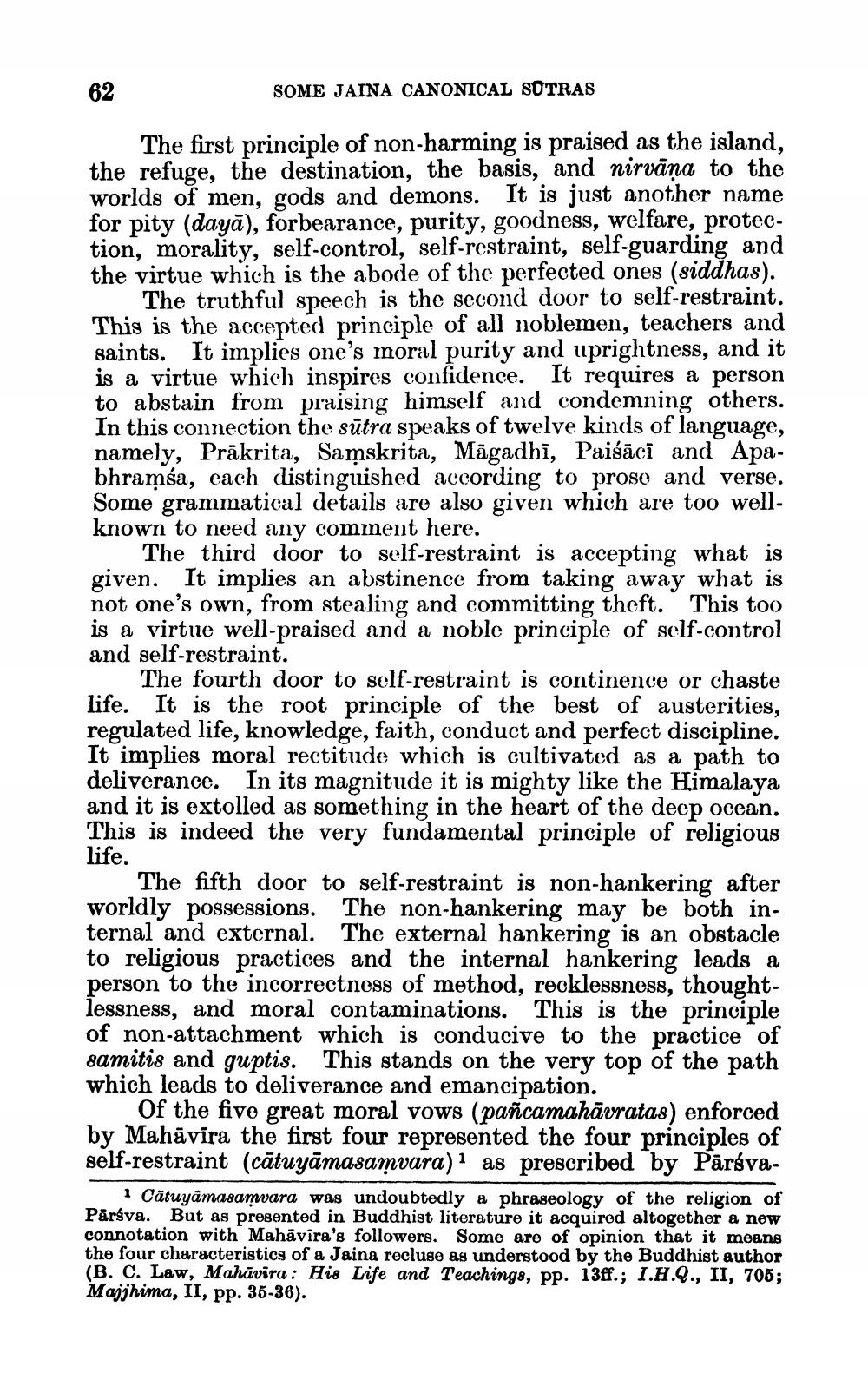________________
62
SOME JAINA CANONICAL SUTRAS
The first principle of non-harming is praised as the island, the refuge, the destination, the basis, and nirvana to the worlds of men, gods and demons. It is just another name for pity (daya), forbearance, purity, goodness, welfare, protection, morality, self-control, self-restraint, self-guarding and the virtue which is the abode of the perfected ones (siddhas).
The truthful speech is the second door to self-restraint. This is the accepted principle of all noblemen, teachers and saints. It implies one's moral purity and uprightness, and it is a virtue which inspires confidence. It requires a person to abstain from praising himself and condemning others. In this connection the sutra speaks of twelve kinds of language, namely, Prakrita, Samskrita, Magadhi, Paiśaci and Apabhramsa, cach distinguished according to prose and verse. Some grammatical details are also given which are too wellknown to need any comment here.
The third door to self-restraint is accepting what is given. It implies an abstinence from taking away what is not one's own, from stealing and committing theft. This too is a virtue well-praised and a noble principle of self-control and self-restraint.
The fourth door to self-restraint is continence or chaste life. It is the root principle of the best of austerities, regulated life, knowledge, faith, conduct and perfect discipline. It implies moral rectitude which is cultivated as a path to deliverance. In its magnitude it is mighty like the Himalaya and it is extolled as something in the heart of the deep ocean. This is indeed the very fundamental principle of religious life.
The fifth door to self-restraint is non-hankering after worldly possessions. The non-hankering may be both internal and external. The external hankering is an obstacle to religious practices and the internal hankering leads a person to the incorrectness of method, recklessness, thoughtlessness, and moral contaminations. This is the principle of non-attachment which is conducive to the practice of samitis and guptis. This stands on the very top of the path which leads to deliverance and emancipation.
Of the five great moral vows (pañcamahāvratas) enforced by Mahavira the first four represented the four principles of self-restraint (cātuyāmasamvara)1 as prescribed by Parśva
1 Cātuyāmasamvara was undoubtedly a phraseology of the religion of Pārsva. But as presented in Buddhist literature it acquired altogether a new connotation with Mahavira's followers. Some are of opinion that it means the four characteristics of a Jaina recluse as understood by the Buddhist author (B. C. Law, Mahavira: His Life and Teachings, pp. 13ff.; I.H.Q., II, 705; Majjhima, II, pp. 36-36).




